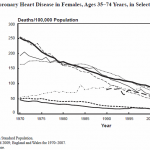This repost is from the Daily Kos.
http://www.dailykos.com/story/2013/04/01/1198534/-Another-day-in-the-Gun-Crazy-U-S-A
While Sandy Hook murders and the Marathon Bombing get a lot national attention, it is the daily tragedy of gun shootings and killings that should be of greatest concern. The Daily Kos simply compiled lists of all of the daily reports of murders for a week ending April 1 on the above web site. Here is the April 1 media summary, the Monday after Easter.
April 1, 2013 edition (Monday)
Northwest Miami-Dade, Fla. — A 4-year-old girl died after being struck by a bullet while sitting in a parked car at a residence along with several other children about 6:10 p.m. Saturday. Police believe one of the children might have accidentally fired the gun.
Kansas City, Mo. — A 14-year-old boy, a middle school student, was shot and killed on a street when someone fired at him from a passing car about 3 p.m. Saturday. A 15-year-old boy who was with the victim was not injured.
Indianapolis, Ind. — A man cleaning his gun was killed about 3:30 p.m. Saturday when the weapon accidentally discharged.
Philadelphia, Penn. — A 27-year-old woman was accidentally shot and killed by her 28-year-old boyfriend about 7:45 p.m. Saturday. The boyfriend says he was arguing with a neighbor, possibly an uncle, when the neighbor threatened him with a hammer. Fearing for his safety, the boyfriend took out a gun, but then tripped and accidentally pulled the trigger, shooting the woman in the neck.
Cleveland Heights, Calif. — A 25-year-old woman was apparently accidentally shot and killed outside a restaurant by a security guard about 3 a.m. Saturday. Police say the victim and three other women were involved in an altercation with the guard inside the restaurant. As he was escorting them off the property, he was knocked to the ground and his weapon discharged, hitting the victim.
Harrisburg, N.C. — A 50-year-old man shot and killed two of his neighbors — a 64-year-old man and a 42-year-old man — in the backyard of one of their homes on a cul-de-sac. He then used the gun to kill himself after a several-hours-long standoff with police. The shooting was related to a dispute of some sort.
Ashtabula, Ohio — A 52-year-old man was shot and killed outside a church by his 25-year-old son shortly after Easter services ended about 1:15 p.m. Sunday.
Hartford, Conn. — A 22-year-old man was shot to death behind a building about 9:20 p.m. Sunday. He was hit once in the head.
Forney, Tex. — A 63-year-old man and his 65-year-old wife were found shot to death at their home Saturday night. The man was the district attorney for the county and police believe the victims were targeted.
North Harris County, Tex. — A 25-year-old man was fatally shot outside a house about 11:30 p.m. Saturday night.
Los Angeles, Calif. — About 11:10 p.m. yesterday, a man and woman encountered two gunmen after they went outside their home to investigate a car-alarm that was going off. A confrontation resulted and it ended up in the house where the man, 50 years old, was shot twice in the chest. He died a short time later. Police report that the gunmen and the victim might have known each other.
Washington, D.C. — A 33-year-old man was shot and killed about 2:10 a.m. Saturday outside an apartment complex. He had been shot in the chest.
Melbourne, Fla. — A sales manager at an auto dealership was shot and killed during an apparent road-rage incident while test-driving a vehicle for a trade-in. During the test drive, the manager stopped to make a right-hand turn and was rear-ended by another car. The driver of that car, a 64-year-old man, then shot the victim, killing him.
Oakland, Calif. — A 31-year-old man was fatally shot while sitting inside a car around 10 a.m. yesterday. The gunman fled in a vehicle.
Oakland, Calif. — A man was fatally shot while on a street about 4:10 p.m. yesterday.
Oakland, Calif. — A man was fatally shot while on a street about 8:10 p.m. yesterday.
Jacksonville, Fla. — A 32-year-old man was fatally shot Sunday morning after getting into a disagreement with a 20-year-old man. Police are looking for the suspect.
Brooklyn, N.Y. — A 37-year-old livery-cab driver on his way to pick up a fare was killed about 12:45 a.m. today after being shot in the face and crashing his minivan.
Bronx, N.Y. — A 28-year-old man was shot in the throat and killed about 12:15 a.m. yesterday inside an apartment building.
Las Vegas, Nev. — A 43-year-old man is a suspect in the shooting deaths of his mother and father. The son claimed he found the couple fatally shot inside their home about 9 p.m. Friday. Police initially thought it was a case of murder-suicide, but now believe the son killed them.
St. Louis, Mo. — When someone in a passing car shot at a group of people, one of the bullets struck a 4-year-old girl in the shoulder as she walked with her mother up the steps of a home. Police arrested a 23-year-old man in connection with the incident.
South Pittsburgh, Tenn. — About 6:30 p.m. Thursday, a 13-year-old was struck in the shoulder by a bullet when his father tested his gun by firing it from his back porch into thick woods. The father didn’t know his son was in the woods; he thought the boy was inside the house. The victim was listed in good condition.
Madison County, Ga. — A 17-year old boy watching TV in a living room accidentally shot himself in the hand while trying to unload a pistol on Saturday.
Port Deposit, Md. — A 20-year-old man accidentally shot himself in the torso when he tripped and fell while walking back to his house after target shooting Saturday about 2:30 p.m. No word on his condition.
Chicago, Ill. — Someone in a moving car opened fire on a 21-year-old man sitting on a porch about 7:30 p.m. yesterday. The victim was struck in the abdomen and was listed in serious condition.
Chicago, Ill. — A 26-year-old man was shot in the hip and knee while leaving a store about 9:15 p.m. yesterday. He was listed in critical condition.
Chicago, Ill. — A 29-year-old man walking down a street was shot in the leg about 9:50 p.m. when someone fired shots at him from a passing car. He was listed in stable condition.
Stamford, Conn. –About 7 p.m. Thursday, a 26-year-old man accidentally shot himself in the leg at his residence while cleaning his semi-automatic gun after returning from a firing range. No word on his condition.
Milwaukee, Wis. — About 9:15 p.m. Saturday, a 17-year-old male was shot by someone during an altercation over a female acquaintance. No word on his condition.
New Orleans, La. — A man was shot in the foot about 7 p.m. yesterday. No word on his condition.
Oakland, Calif. — Someone was shot about 7 p.m. yesterday. No word on the victim’s condition.
Jacksonville, Fla. — A man was shot in the upper torso about 9 p.m. yesterday. He was expected to survive.
Washington, D.C. — A 16-year-old boy was shot and wounded while on a street about 12:40 a.m. today when someone in a car fired at him. His injuries were reported as non life-threatening.
Jacksonville, Fla. — A man sitting in front of a house with two or three friends was shot twice in the leg about 5 p.m. Saturday when a car pulled up and someone in the car opened fire. The victim was reported to have non life-threatening injuries.
Oregon City, Ore. — After a 22-year-old woman parked her car about 10:20 p.m. Sunday, a male stranger approached from behind and grabbed her hair and then began dragging her backward. The assailant fled when she pulled out a handgun and pointed it at him.
Today’s sources: Akron Beacon Journal, cecildaily.com, Chicago Tribune, Denver Post, Hartford Courant, Houston Chronicle, KABC-TV Los Angeles, KCTV-TV Kansas City, madisonjournaltoday.com, Milwaukee Journal-Sentinel, Oakland Tribune, The Oregonian, Orlando Sentinel, stamfordpatch.com, Times-Picayune, Washington Post, WCAU-TV Philadelphia, WISH-TV Indianapolis, WRCB-TV Chattanooga, WSOC-TV Charlotte, WTLV-TV Jacksonville
http://www.dailykos.com/story/2013/04/01/1198534/-Another-day-in-the-Gun-Crazy-U-S-A




